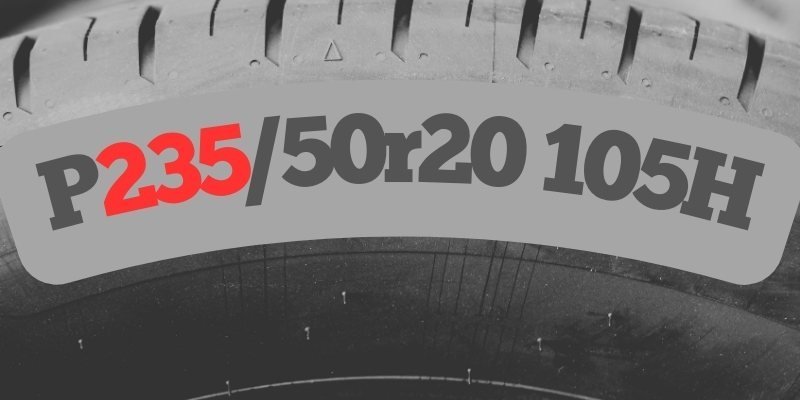What Does 235 Mean on a Tire?

The number 235 on a tire refers to its width in millimeters. It’s part of a series of numbers and letters that provide important information about the tire’s size and capabilities. Understanding these numbers can help you choose the right tires for your vehicle and ensure safe driving.
Decoding Tire Code
Have you ever looked at your car’s tires and wondered what all those numbers and letters mean? Don’t worry, you’re not alone! Many drivers find tire codes confusing. Let’s break it down using our example: 235.
The 235 is just one part of a longer code you’ll see on your tire’s sidewall. A typical tire code might look something like this:
235/45R18 94V
Each part of this code tells us something important about the tire. Let’s focus on that first number, 235.
What 235 Really Means
The number 235 tells us how wide the tire is. It’s measured in millimeters from one sidewall to the other. To give you an idea, 235 millimeters is about 9.25 inches.
Why does tire width matter? It affects several things:
- Grip: Wider tires usually offer more grip on the road.
- Handling: The width can impact how your car handles turns.
- Fuel efficiency: Wider tires might slightly reduce fuel efficiency.
- Comfort: The width can affect how smooth your ride feels.
The Rest of the Tire Code
While we’re focusing on the 235, it’s helpful to understand the other parts of the code too:
- 45: This is the aspect ratio. It tells us the tire’s height is 45% of its width.
- R: Stands for Radial construction, which is the most common type of tire.
- 18: This is the wheel diameter in inches.
- 94: The load index, showing how much weight the tire can support.
- V: The speed rating, indicating the maximum speed the tire can handle safely.
Why Tire Size Matters
Choosing the right tire size is crucial for your car’s performance and safety. Here’s why:
- Fit: Your car is designed for specific tire sizes. The wrong size might not fit properly.
- Speedometer accuracy: Tire size affects how your speedometer reads.
- Safety: Incorrect sizes can lead to poor handling or even accidents.
- Comfort: The right size helps ensure a smooth ride.
How to Find the Right Tire Size
Now that you know what 235 means, how do you find the right size for your car? Here are some tips:
- Check your car’s manual. It usually lists the recommended tire sizes.
- Look inside your driver’s side door. There’s often a sticker with tire info.
- Ask a professional. Tire shops can help you find the right size.
Can You Change Tire Sizes?
Sometimes, drivers want to change their tire size. Maybe you want a sportier look or better performance. Is this okay?
It can be, but be careful. Small changes might be fine, but big ones can cause problems. Always consult with a tire professional before making changes.
Impact of Tire
Let’s talk about how that 235 width might affect your driving:
- Cornering: Wider tires often provide better cornering ability.
- Wet roads: The width can affect how well your car handles in rain.
- Snow: Believe it or not, narrower tires might be better in snow.
- Noise: Wider tires might make a bit more noise on the road.
Conclusion
Understanding what 235 means on a tire is just the start of tire knowledge. It’s the width in millimeters, and it plays a big role in how your car performs and feels on the road.
Remember, the right tire size is crucial for safety and performance. While it’s fun to know what these numbers mean, always consult your car’s manual or a tire professional when it’s time for new tires.
With this knowledge, you’re now better equipped to make informed decisions about your vehicle’s tires. Happy (and safe) driving!

Meet Caitlin McCormack, a Tire Size Expert and Blogger Passionate About Everything Related to Tires. With Years of Experience in the Tire Industry, Caitlin Has Become an Expert in Tire Sizes and Their Impact on Vehicle Performance.
